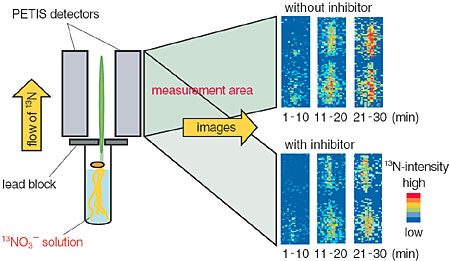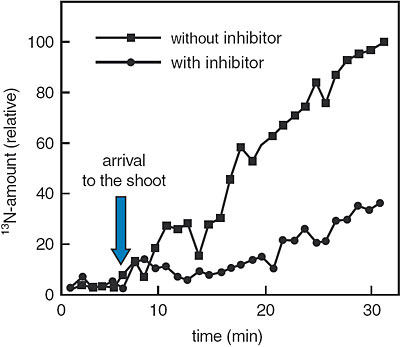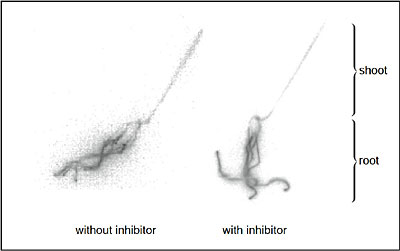|
Nitrate ions taken up from the soil are a major nitrogen nutrient for plants. The nitrate ions taken up by the roots accumulate in root cells and are transferred to the xylem for long-distance transportation. Nitrate ions have to cross many cell membranes in being transferred from the outside cells of roots to the xylem vessel. Loading of nitrate ions into the xylem vessel in roots is considered to be a key step in the control of xylem nitrate ion transportation in plants. It is believed that the ion channel in the cell membrane is the pathway for nitrate ions. Thus, we have used a nitrate ion channel blocker, which inhibits the penetration of nitrate ions through cell membranes, in order to understand the relation between the activity of ion channels and nitrate uptake and transportation. In these experiments, we have applied an anion-channel blocker to young barley plants, and have observed the absorption and transportation of 13NO3- (nitrate ions which have been labeled with the positron emitting nuclide 13N) from the roots up into young leaves, using a positron emitting tracer imaging system (PETIS). We at JAERI have constructed the PETIS, allowing us to observe the transportation of substances in living plants (Fig. 6-13). The results obtained show that the transportation of 13NO3- in a barley to which channel blocker has been applied was smaller than that in the normal barley plant (Fig. 6-14). However, accumulation of 13NO3- in the roots of the barley with channel blocker applied was found to be at the same level as that in a normal barley plant (Fig. 6-15). Through the observation of nitrate ion transportation in living plants using the PETIS, we have succeeded in showing that the channel blocker affects only the transportation of nitrate ions through the cell membranes, but has no effect on the uptake of nitrate ions by the roots.
|


